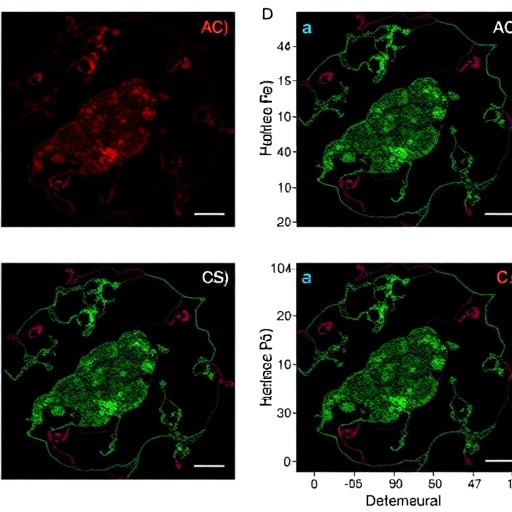RESEARCH TRIANGLE PARK, N.C. — A new approach to studying conjugated polymers made it possible for an Army-funded research team to measure, for the first time, the individual molecules’ mechanical and kinetic properties during polymerization reaction. The insights gained could lead to more flexible and robust soft electronic materials, such as health monitors and soft robotics.
Conjugated polymers are essentially clusters of molecules strung along a backbone that can conduct electrons and absorb light. This makes them a perfect fit for creating soft optoelectronics, such as wearable electronic devices; however, as flexible as they are, these polymers are difficult to study in bulk because they aggregate and fall out from solution.
With Army funding, researchers at Cornell University employed an approach they pioneered on other synthetic polymers, called magnetic tweezers, that allowed them to stretch and twist individual molecules of the conjugated polymer polyacetylene. The research was published in the journal Chem.
“Through the use of novel single-molecule manipulation and imaging approaches, this work provided the first observations of single-chain behaviors in conjugated polymers which lays the foundation for the rational design and processing of these materials to enable widespread application,” Poree said.
Previous efforts to address the solubility of conjugated polymers have often relied upon chemical derivatization, in which the structures are modified with functional groups of atoms. However, that approach can affect the polymer’s innate properties.
“The conjugated polymer is really a prototype,” said Dr. Peng Chen, the Peter J.W. Debye professor of chemistry and chemical biology at Cornell. “You always modify it to tailor it for applications. We are hoping everything we measured – the fundamental properties of synthesis kinetics, the mechanical property – become benchmark numbers for people to think about other polymers of the same category.”
In 2017, Chen’s group was the first to use the magnetic tweezers measurement technique to study living polymerization, visualizing it at the single-molecule level. The technique had already been used in the biophysics field for studying DNA and proteins, but no one had successfully extended it to the realm of synthetic polymers.
The process works by affixing one end of a polymer strand to a glass coverslip and the other end to a tiny magnetic particle. The researchers then use a magnetic field to manipulate the conjugated polymer, stretching or twisting it, and measuring the response of a single polymer chain that grows.
The amounts are so small, they stay soluble in solution, the way bulk amounts normally would not.
The team measured how long chains of conjugated polymers, which consist of hundreds of thousands of monomer units, grow in real time. They discovered these polymers add a new monomer per second, a much faster growth than their nonconjugated analogs.
“We found that while growing in real time, this polymer forms conformational entanglements,” Chen said. “All polymers we have studied form conformational entanglements, but for this conjugated polymer this conformational entanglement is looser, allowing it to grow faster.”
By pulling and stretching individual conjugated polymers, so-called force extension measurements, the researchers were able to assess their rigidity and better understand how they can bend in different directions while remaining conjugated and retaining electron conductivity.
They also discovered the polymers displayed diverse mechanical behaviors from one individual chain to the next-behaviors that had been predicted by theory but never observed experimentally.
The findings highlight both the uniqueness of conjugated polymers for a range of applications as well as the strength of using a single-molecule manipulation and imaging technique on synthetic materials.
“Now we have a new way to study how these conjugated polymers are made chemically and what is the fundamental mechanical property of this type of material,” Chen said. “We can study how these fundamental properties change when you start tailoring them for application purposes. Maybe you can make it more mechanically flexible and make the polymer longer, or adjust the synthesis condition to either synthesize the polymer in a faster or slower way.”
###
Visit the laboratory’s Media Center to discover more Army science and technology stories
As the Army’s national research laboratory, ARL is operationalizing science to achieve transformational overmatch. Through collaboration across the command’s core technical competencies, we lead in the discovery, development and delivery of the technology-based capabilities required to make Soldiers more successful at winning the nation’s wars and come home safely. DEVCOM Army Research Laboratory is an element of the U.S. Army Combat Capabilities Development Command. DEVCOM is a major subordinate command of the Army Futures Command.
Media Contact
Lisa B. Bistreich-Wolfe
[email protected]
Original Source
https:/
Related Journal Article
http://dx.





